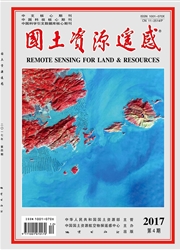

 中文摘要:
中文摘要:
从潜在光谱响应指数及光谱特征波段反射率两个层面对不同浓度水稻Zn污染胁迫进行遥感监测。在光谱指数层面,系统分析了高光谱遥感指数与zn污染胁迫下的水稻叶绿素含量、水分含量、细胞结构和叶面积指数等4个重要生理生态参数变化特征的响应关系。通过实验,得到表征生态参数变化的高光谱遥感指数及其响应规律,建立响应水稻zn污染的三维高光谱遥感指数空间识别模型;在光谱反射率层面,利用独立分量分析(IndependentComponentAnalysis,ICA)方法对可见光、近红外光谱区多个波段光谱反射率进行分量分解,找到反映Zn污染浓度变化的独立分量,建立可见光一近红外独立分量特征空间。不同浓度的水稻Zn污染在光谱指数空间和独立分量特征空间表现出不同的规律,结合上述两空间判别水稻Zn污染浓度,提高了可靠性和敏感性。
 英文摘要:
英文摘要:
Zn contamination of rice with different concentrations of stress was identified by the remote sensing diagnosis method from the potential Hyperspectral index and the representative spectral reflectance. At the spectral index level, the authors systematically analyzed the responsive relationships of the Hyperspeetral index and four important physiological parameters under the stress of Zn pollution, which include chlorophyll content, water content, cell structure and leaf area index. Through the experiments, the authors extracted Hyperspectral remote sensing indexes which reflect the change of ecological parameters and their interactive reglarity, thus establishing the three - dimensional identification model of Hyperspectral remote sensing indexes which reflect the change of Zn contamination. At the spectral reflectance level, spectral reflectance of representative bands in visible and near infrared spectral bands were decomposed using the method of independent component analysis ( ICA ), and the independent components which reflect the change of Zn contamination concentration were found. Thus the visiblenear infrared independent component space was established. Zn contamination with different concentrations exhibits different laws in the Hyperspectral index and independent component space, Zn contamination of rice with different concentrations can be determined combined with Hyperspectral index and independent component space, the reliability and sensitivity is improved.
 同期刊论文项目
同期刊论文项目
 同项目期刊论文
同项目期刊论文
 Neural-network model for estimating leaf chlorophyll concentration in rice under stress from heavy m
Neural-network model for estimating leaf chlorophyll concentration in rice under stress from heavy m 期刊信息
期刊信息
